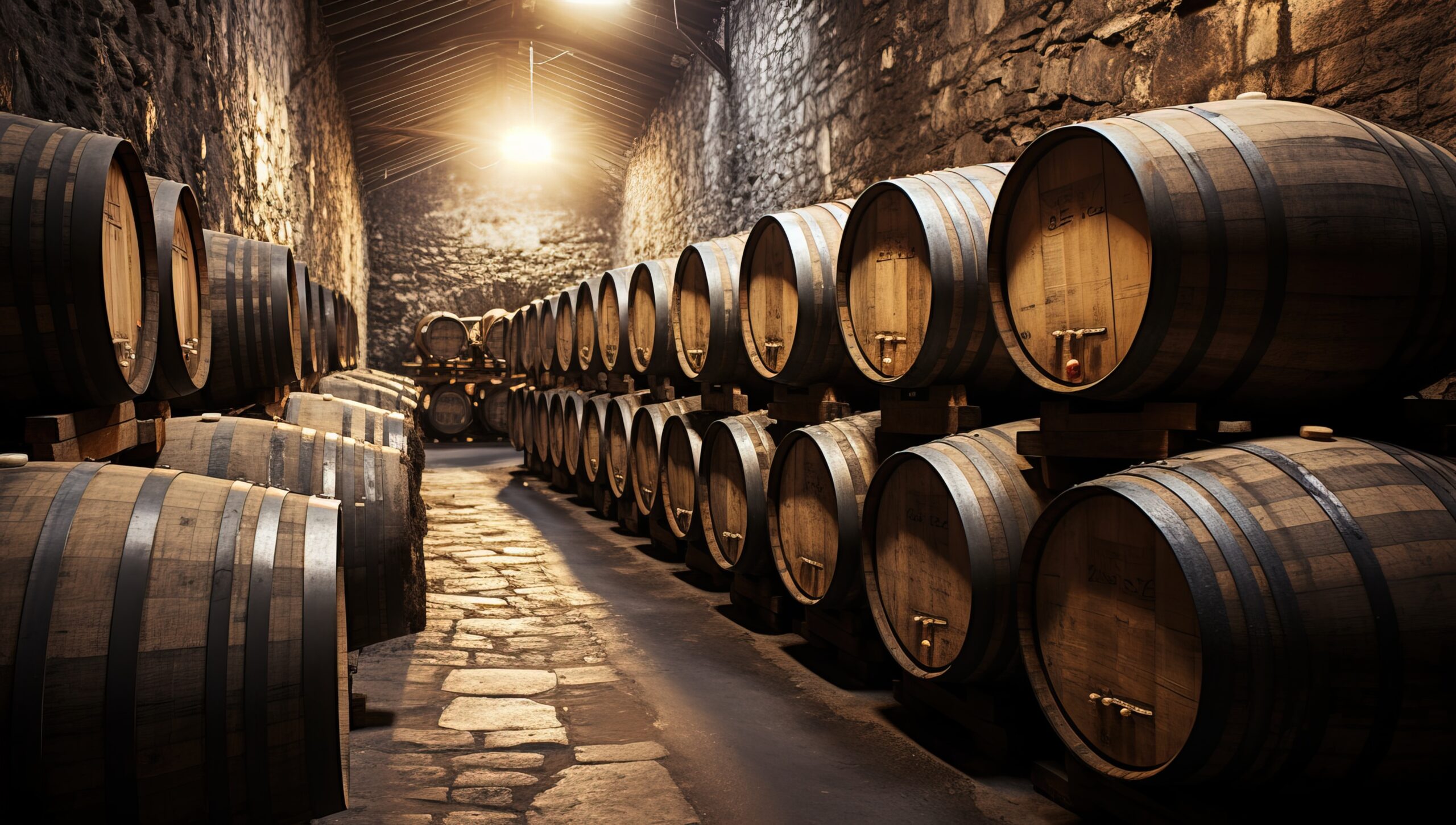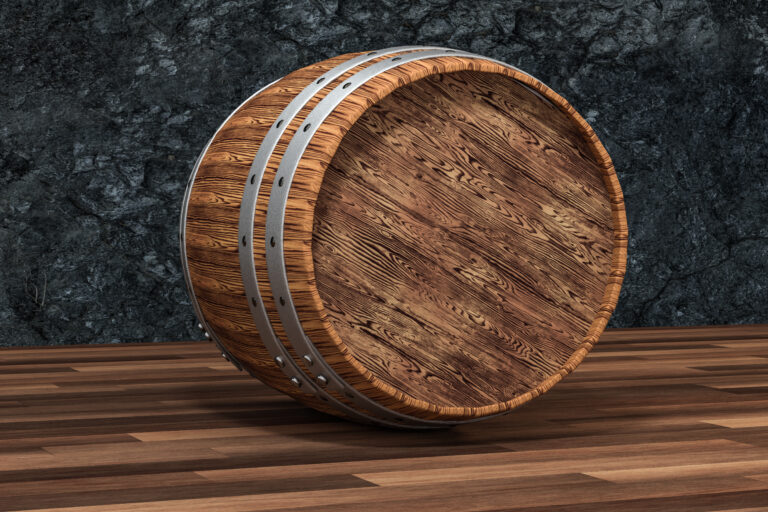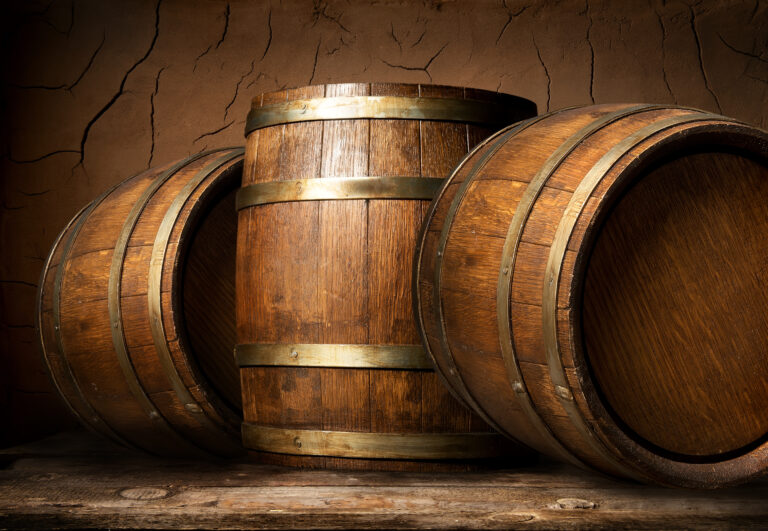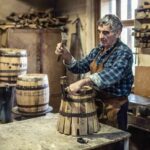Ever wonder about the magic unfolding inside those vast whiskey warehouses you glimpse? That luscious amber liquid, nestled in charred oak barrels, is undergoing a profound transformation into something truly exceptional. But the barrels aren’t the sole architects of this change. The warehouse environment itself plays a vital, often underestimated, role in the whiskey aging process.
Step inside one of these sprawling buildings, and the first thing that envelops you is the intoxicating aroma – a rich tapestry woven from wood and aging whiskey. As you navigate the rows of barrels, you’ll notice subtle shifts in temperature and humidity. It’s a fascinating reality that barrels on the upper floors mature differently than those at ground level. The nuanced variations in temperature, airflow, and humidity each leave their unique imprint on the whiskey’s development within each oak barrel.
While the whiskey barrels are crucial for infusing flavor and color, the often-overlooked warehouse environment provides the ideal conditions for the whiskey to mellow and evolve its distinctive character. So, the next time you savor a glass of finely aged whiskey, remember the silent partnership between barrel and warehouse – two distinct worlds converging to create something truly remarkable.
What Makes a Warehouse Environment Unique for Maturing Whiskey
The aging of whiskey is a delicate art, deeply intertwined with the warehouse environment. Factors like temperature, humidity, airflow, and even sunlight contribute to the development of the whiskey’s flavor profile and character.
The warehouse location dictates the prevailing climate. Warehouses in more temperate zones experience gentler temperature swings, fostering a slower, more nuanced maturation. Conversely, coastal warehouses, with their higher humidity, can accelerate the whiskey aging process.
The vertical positioning of whiskey barrels within the warehouse also matters. Barrels stored higher up, closer to the roof, are exposed to more extreme temperature fluctuations, leading to faster maturation. In contrast, barrels on the cooler bottom floors age more gradually. Master blenders strategically select barrels from various levels and locations to achieve the desired complexity in their whiskey.
Even a barrel’s proximity to windows influences temperature and humidity, subsequently affecting maturation. Increased light and heat can accelerate aging, while less light and cooler temperatures slow it down.
Airflow within the rickhouse plays a crucial role by circulating whiskey vapors between barrels, facilitating the exchange of flavors. Enhanced airflow promotes greater interaction and faster maturation, while stagnant air leads to slower aging.
The very wood of the warehouse, whether oak, pine, or cypress, can subtly impact the whiskey’s flavor. Oak structures tend to impart more pronounced flavors. Furthermore, the previous use of the wood, such as in bourbon or sherry production, can contribute distinct characteristics to the maturing whiskey.
Ultimately, the flavor of a quality whiskey is a result of the intricate interplay of all these environmental factors. Master distillers meticulously monitor their whiskey warehouses to identify the optimal conditions for their spirit. The warehouse is undeniably instrumental in shaping a whiskey’s distinctive taste.
How Warehouse Location Impacts Temperature and Humidity
The location of a whiskey warehouse has a profound impact on temperature and humidity, which in turn dictates how the whiskey barrels age and develop their unique flavor.
Climate Control
In cooler climates, the whiskey aging process proceeds more slowly, allowing for the development of complex flavor compounds over an extended period. Additionally, cooler temperatures result in less volume loss due to evaporation, often referred to as the “angel’s share,” meaning more whiskey makes it to bottling. In warmer regions, the whiskey ages more rapidly and experiences a greater “angel’s share,” often resulting in a lighter, fruitier flavor profile.
Humidity Factor
Humidity levels directly influence the interaction between the whiskey and the oak barrels. Higher humidity causes the barrels to swell as they absorb moisture from the surrounding air. When humidity decreases, the barrels contract, releasing some of the whiskey back into the wood. This cyclical interaction, often called the “breath of the angel,” plays a significant role in developing the whiskey’s flavor and color. Warehouses in damp, coastal areas or those situated near rivers tend to produce whiskies with heavier, earthier notes due to increased wood contact.
Air Circulation
Stagnant, poorly ventilated air hinders the interaction between the whiskey and the wood, while good airflow and ventilation accelerate the aging process and flavor development. Many distilleries even employ climate control systems to precisely regulate temperature and humidity within their whiskey warehouses. The geographical placement of the warehouse, whether on a hilltop or in a valley, also affects how weather patterns move through the space.
In essence, location is paramount in the world of whiskey. The dynamic interplay between the whiskey barrels and the local microclimate gives rise to the distinctive flavor profiles that characterize whiskies from different regions. So, the next time you savor a glass of whiskey, take a moment to appreciate the humble warehouse that played a crucial role in crafting its unique character.
The Science Behind Warehouse Microclimates
The aging of whiskey is a complex dance between the wood barrels and the surrounding warehouse environment. Achieving the perfect barrel-aged whiskey hinges on creating the right conditions.
Temperature Fluctuations
The temperature within the whiskey warehouse significantly influences the speed at which whiskey ages and develops its distinctive flavor profile. Warmer temperatures accelerate chemical reactions within the barrel, enabling the whiskey to extract more flavors from the wood. Conversely, colder temperatures slow down the aging process.
Seasonal temperature variations also drive the expansion and contraction of the wood barrels, allowing the whiskey to penetrate deeper into the wood. These natural temperature fluctuations, particularly in older warehouses, create ideal conditions for aging fine whiskey.
Humidity
The humidity inside the whiskey warehouse also plays a crucial role in the aging process. High humidity causes the wood to swell, effectively closing some of its pores. When humidity drops, the wood contracts, creating tiny cracks and crevices that allow the whiskey to seep into the wood.
This continuous cycle of expansion and contraction exposes the whiskey to a greater surface area of the wood, leading to the extraction of additional compounds that contribute to the spirit’s distinctive aroma and taste.
Air Circulation
Proper air circulation is essential for maintaining stable temperature and humidity levels within the whiskey warehouse. Adequate ventilation prevents the buildup of extreme heat and moisture, especially on the upper levels. Stagnant, trapped air can create suboptimal aging conditions and negatively impact the quality of the whiskey.
Gentle air currents also aid in distributing the rich, concentrated flavors that tend to accumulate near the top of the warehouse, resulting in a more consistent final product. Master distillers carefully monitor airflow and make adjustments as needed to cultivate the perfect environment for aging their whiskey.
The seemingly quiet and unassuming existence of whiskey barrels aging in a warehouse is anything but simple. An intricate interplay between wood, whiskey, and microclimate is responsible for transforming raw distillate into a premium, aged spirit. Understanding these relationships is fundamental to producing an exceptional barrel-aged whiskey.
Why Wood Matters – Exploring Barrel Composition
Wood is the source of whiskey’s signature flavor and color. The type of wood used for the whiskey barrels is immensely important. For bourbon, new charred oak barrels are legally required. As the whiskey ages, the wood imparts notes of vanilla and caramel.
Oak Species
The two primary types of oak used in whiskey barrel production are American white oak and European oak. American white oak, such as Quercus alba, is the standard for bourbon, contributing a sweeter flavor profile. European oak, often Quercus robur or Quercus petraea, tends to impart more spicy notes and is commonly used for scotch, brandy, and sherry.
The origin and growing conditions of the wood also influence the flavor. Wood from colder climates tends to be denser, resulting in more intense flavor transfer. The age, grain, and level of toasting or charring of the whiskey barrels further impact the aroma and taste compounds that are imparted to the whiskey.
The Char
Whiskey barrels undergo toasting and charring before filling to caramelize the wood sugars and impart a smoky flavor. The level of charring creates different flavor profiles. A light toast allows more subtle wood flavors to emerge, while a heavy char gives bourbon its distinctive smoky sweetness. As the whiskey ages, it absorbs and integrates these wood-derived flavors.
The interaction between whiskey and wood is a complex process. Essentially, the whiskey extracts desirable flavor and aroma compounds from the wood, such as vanillin, while the wood mellows the whiskey by absorbing harsh alcohols and organic acids. This interplay between wood and spirit creates a truly unique and enjoyable drink. Therefore, the type of wood, its source, and its treatment are essential factors in producing premium, full-flavored whiskies.
How Whiskey Interacts With the Barrel Over Time
As whiskey matures in oak barrels, a series of intricate chemical reactions occur, imparting flavor, aroma, and color to the spirit. The interaction between the whiskey and the wood is a delicate process that can span years or even decades.
Evaporation
One of the initial phenomena after whiskey barrels are filled is evaporation, famously known as the “angel’s share.” On average, 2-4% of the whiskey in the barrel evaporates each year, although this rate can vary depending on factors like humidity and temperature. While this might seem like a loss, it actually helps to concentrate the remaining flavors within the barrel.
Extraction
The whiskey actively extracts compounds from the charred oak, including vanillin, lactones, and tannins. These compounds contribute flavors of vanilla, coconut, and spice. The barrel also imparts color compounds to the whiskey, resulting in its characteristic amber hues.
Oxidation
As oxygen interacts with the whiskey through the porous barrel staves, it breaks down certain compounds and creates new ones. This process helps to round out any sharp edges, mellows the whiskey, and contributes to a smooth and buttery mouthfeel. Oxidation is responsible for many of the nutty and sherry-like flavors found in aged whiskies.
Blending
All of these complex chemical reactions meld together within the oak barrel to create a truly unique whiskey. The specific type of oak, the level of char, the racking position within the rickhouse, and the microclimate surrounding each barrel ensure that no two barrels contain exactly the same whiskey, even if they originated from the same distillate.
When finally bottled, a whiskey has undergone a remarkable transformation into a complex libation brimming with flavors reminiscent of spices, dried fruits, nuts, and sweets – a far cry from the clear, distilled spirit initially placed in the barrel. The serendipitous interplay of wood and whiskey can rightly be considered an art form, one that, when executed with care and patience, results in a spirit that is truly greater than the sum of its parts.
Regional Influences – Comparing Scotch, Bourbon and Irish Whiskey Barrels
The aging of whiskey in barrels is significantly influenced by the region and climate in which the whiskey barrels are stored. Whiskey barrels in Scotland, Kentucky, and Ireland impart distinctive flavors to the whiskey within due to variations in temperature, humidity, and airflow.
Scotch Whisky
In Scotland, whiskey barrels are often aged in warehouses with thick stone walls, sometimes up to a meter in thickness. The climate is typically cool and damp, and the warehouses are generally unheated. This environment encourages a slow and steady interaction between the whiskey and the wood, resulting in the development of flavors like dried fruit, nuts, and spice. While the minimum aging period for Scotch whisky is 3 years, it is common for whiskies to age for 12-25 years or even longer.
Bourbon
Kentucky’s hot and humid climate leads to a much faster aging process for bourbon in whiskey barrels. The warehouses, known as rickhouses, are often constructed of metal and wood, allowing for significant temperature fluctuations. During the summer months, the bourbon expands into the wood, extracting notes of vanilla, caramel, and oak. In the winter, the bourbon contracts, pulling flavor compounds back into the liquid. This annual cycle accelerates the aging process. Most bourbons are aged for 4-10 years.
Irish Whiskey
In Ireland, whiskey barrels are typically aged in smaller warehouses, often made of stone or brick. The moderate, maritime climate results in less extreme temperature variations. Irish whiskeys tend to be aged for 3-7 years, often in barrels that previously held rum, port, sherry, or wine, which imparts subtle floral and fruity notes to the spirit. The barrels contribute a gentle character that complements the distilled spirit.
The location of the whiskey barrels during aging plays an integral role in shaping the distinctive aroma, taste, mouthfeel, and finish of each whiskey variety. Whether resting in the damp cellar of a Scottish castle or a hot Kentucky rickhouse, the interaction between spirit and barrel over time creates an alchemy that defines one of the world’s most complex and diverse drinks.
Monitoring and Manipulating Microclimates for Desired Flavor Outcomes
The aging of whiskey involves a complex interplay between the whiskey barrels, the warehouse environment, and the whiskey itself. Master distillers meticulously monitor and control warehouse conditions to achieve the desired flavors in the finished product.
Temperature
The temperature within the whiskey warehouse significantly influences how the whiskey extracts flavors from the oak barrels. Warmer temperatures accelerate the chemical reactions between the whiskey and the wood, resulting in more robust and intense flavors in a shorter timeframe. Cooler temperatures lead to lighter, more subtle flavors. Distillers often strategically move whiskey barrels between different warehouse levels or locations to manage temperature and achieve the target flavor profile.
Humidity
Humidity levels also play a crucial role in barrel aging. High humidity causes the wood to swell, closing its pores and slowing down both the absorption and evaporation of the whiskey. Conversely, lower humidity causes the wood to shrink, opening the pores and accelerating the aging process. By controlling humidity through ventilation, heating, or dehumidifiers, distillers can regulate the pace of aging.
Barrel Rotation
Rotating and repositioning the whiskey barrels exposes the whiskey to varying temperature and humidity conditions within the warehouse. This practice helps to ensure a more consistent and even aging process, leading to a balanced flavor. Whiskey barrels might be moved from the warmer upper levels of the warehouse to the cooler lower levels, or from interior locations to the more exposed edges.
Blending
During barrel aging, each whiskey barrel develops its own unique characteristics based on its specific conditions within the warehouse. Master distillers carefully blend whiskeys from different barrels to create a harmonious and complex flavor profile that remains consistent from batch to batch. Whiskey barrels aged under different conditions are often blended to balance intense and mellow flavors.
By closely monitoring factors such as temperature, humidity, barrel rotation, and blending, distillers can effectively manipulate the microclimates within the whiskey warehouse to achieve their desired flavor outcomes. The intricate relationship between the whiskey barrels, the environment, and the distiller’s expertise is fundamental to producing premium, full-flavored whiskies.
Innovations in Warehouse Design for Whiskey Maturation
The design and construction of whiskey warehouses can significantly impact how whiskey barrels mature. As the whiskey industry has evolved, distillers have implemented innovative warehouse designs to enhance temperature control and airflow, ultimately leading to improved barrel maturation.
Climate-Controlled Warehouses
Some distilleries now utilize climate-controlled warehouses to precisely regulate both temperature and humidity. By maintaining consistent conditions year-round, they aim to achieve more predictable maturation and flavor development. However, some argue that this approach limits the seasonal fluctuations that contribute to a whiskey’s unique character. This remains an ongoing debate within the industry.
Multi-Story Warehouses
To maximize storage capacity, many distilleries construct multi-story whiskey warehouses. However, the upper floors tend to be warmer, causing whiskey barrels stored there to mature faster, while lower floors remain cooler. To address this variation, distillers often rotate whiskey barrels between floors during the aging process. Some believe that this blending of maturation rates from different levels contributes to more complex flavor profiles.
Double Barreling
Certain distillers have experimented with a technique called “double barreling.” This involves initially aging whiskey in used bourbon barrels and then transferring it to different casks, such as port or sherry barrels, for a secondary aging period. This secondary maturation in a different barrel type introduces complementary flavors, resulting in a unique taste profile. Well-known examples of this practice include Maker’s Mark 46 and Knob Creek Double Barreled Rye.
Solar-Powered Warehouses
A few forward-thinking distilleries have constructed solar-powered warehouses. By harnessing solar energy to heat and cool the warehouse, they aim to minimize energy consumption while leveraging natural temperature changes to influence the whiskey’s flavor. As sustainable distilling practices gain traction, solar-powered warehouses could become more prevalent.
Innovations in warehouse design and barrel management have provided distillers with greater control over barrel maturation. While some techniques aim to accelerate the aging process or create consistency, others focus on working in harmony with seasonal and environmental changes to develop complex and distinctive flavor profiles. The ongoing pursuit of the ideal balance between scientific precision and traditional craftsmanship continues to drive progress within the whiskey industry.
The Interplay Between Whiskey Barrels and Warehouse Microclimates FAQs
The whiskey barrels used to age whiskey are more than just containers – they actively shape the flavor of the spirit. As whiskey interacts with the wood, numerous complex chemical reactions occur that determine its distinctive taste. However, the whiskey barrels themselves are also influenced by their storage environment.
Temperature
The temperature within the whiskey warehouse influences the rate at which whiskey extracts compounds from the wood. Warmer temperatures accelerate this interaction, leading to a whiskey with more pronounced wood-derived flavors like vanilla, caramel, and spice in a shorter period. Colder temperatures slow down this process, resulting in a lighter, more subtle flavor.
Humidity
The humidity level in the whiskey warehouse controls the amount of whiskey that evaporates from the whiskey barrels over time. Higher humidity leads to less evaporation, while lower humidity results in a greater loss, known as the “angel’s share.” As whiskey evaporates, the remaining spirit becomes more concentrated in flavor. The interplay between temperature and humidity thus creates a spectrum of flavor intensities in the final product.
Air Circulation
The movement of air around the whiskey barrels also affects the aging process. Increased air circulation exposes more of the whiskey’s surface area to oxygen, accelerating certain chemical reactions that impart a darker color and nuttier, drier aromas. Stagnant, less circulated air limits these oxidative effects, preserving a lighter, fruitier quality.
Barrel Variation
It’s a fascinating truth that no two whiskey barrels age exactly alike, even when stored under identical conditions. Subtle differences in the wood itself, including the tightness of the grain, natural oils, and lignin content, lead to nuanced variations between barrels. Master distillers skillfully blend whiskeys from multiple barrels to create a complex, multi-dimensional flavor profile that aligns with the brand’s signature style.
The warehouse environment and the whiskey barrels engage in a delicate dance that transforms clear distillate into an amber liquid with a distinct aroma, taste, and finish. By understanding how these factors interact, distillers can exert fine-grained control over the aging process to craft whiskies offering a diverse range of flavor experiences. Yet, in the end, a touch of serendipity still plays a role in producing a truly exceptional spirit.
Final Thoughts
As you’ve now discovered, a whole secret world operates within those whiskey warehouses that most people never witness. The intricate interaction between whiskey barrels and their surrounding environment profoundly shapes the flavor of the whiskey nestled inside. Factors like temperature fluctuations, humidity levels, airflow, and the placement of whiskey barrels are all meticulously controlled and monitored to cultivate the ideal conditions for maturation. It’s quite remarkable that simple oak barrels and a generous measure of patience can transform distilled spirits into complex, multi-layered drams. The next time you pour a glass of whiskey, take a moment to swirl it gently, inhale the captivating aromas, and appreciate the unseen alchemy of aging that made it all possible. All those long years of quiet repose in the dimly lit solitude of the warehouse have molded it into the sensory experience you now get to enjoy. Not a bad bit of magic, wouldn’t you agree?







